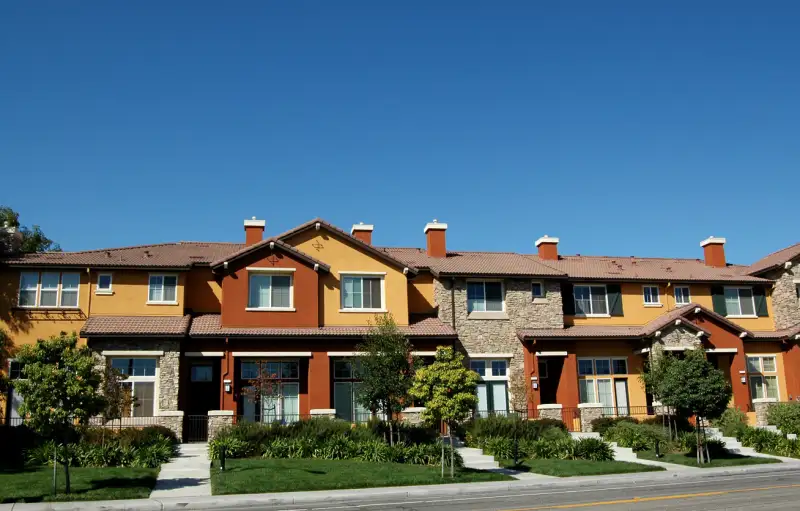Here's a Fast (And Overlooked) Way to Refinance Your Mortgage

Want to refinance? If you have a government-backed loan it could be easier than you think.
If you’ve been following the news lately, you know the federal government has been taking a series of measures to help those struggling financially amid the coronavirus outbreak and to keep the economy afloat during the crisis.
Last week, the Fed bought $183 billion of mortgage-backed securities, in an effort to drive down rates and stabilize the market. As a result, mortgage rates dropped for the first time in three weeks, benefiting homeowners who want to refinance.
“Borrowers considering a refinance should know that rates should stabilize, allowing them the opportunity to take advantage of a lower rate and monthly payment – a good thing during these challenging and hopefully short-term uncertain times,” said Adam DeSanctis, Director of Public Affairs at the Mortgage Bankers Association (MBA).
If you’re amongst the flock of American homeowners looking to take advantage of these favorable conditions, you may be hesitating because you feel refinancing can potentially take as much time and require as much paperwork as your original mortgage.
However, that’s not the case with a “streamline refinance.” If you have a government-backed mortgage, a streamline refinance allows you to skip the traditional steps required in a conventional refinance, such as home appraisal and income verification.
Exclusive only to FHA, VA, and USDA loans, streamline refinancing relies on information that is already available on your original mortgage. As a result, it speeds up the process, and in most cases, improves the homeowners chance for a quick approval. In the case of VA loans, this program is often referred to as an Interest Reduction Refinancing Loan (IRRL).
“Anyone with an FHA, VA, or USDA mortgage with a rate above about 4% might start shopping around,” said Tim Lucas, Managing Editor of My Mortgage Insider. “Often, these loans require only verification from the employer that the applicant is still employed. That can come in handy for those who have experienced reduced hours amid COVID-19 slowdowns. The refinance, obviously, can reduce the homeowner's monthly payment, making it easier to stay on top of the mortgage if they are not bringing in as much income.”
The main benefits of a streamline refinance include options to lower payment without extending the length of your loan, and, oftentimes, faster closings.
“Another advantage is that you can "skip" a payment when refinancing if using a VA or USDA streamline,” added Lucas. “In reality, you're not skipping a payment, you're wrapping it into the new loan balance. Still, deferring a single payment can help homeowners catch up on payments if their household income is lower for a time.”
As these are government-backed loans, application requirements for a streamline refinance are pretty standard and include the following criteria:
- You must have an existing FHA- or VA- or USDA- insured mortgage
- Your mortgage payments must be current, with no more than one late payment in the last year
- The six most-recent payments must be on-time, and the mortgage should be at least 210 days old
- As for USDA direct and guaranteed rural homebuyers, payments must be current on their mortgage for full 12 months prior to requesting the loan
- The new loan must not exceed the initial mortgage amount
- The refinance must have a net-tangible benefit resulting in at least 0.50% reduction in the combined interest rate and Mortgage Insurance Premium (MIP) or refinancing from an adjustable-rate mortgage (ARM) to a fixed-rate mortgage (with no more than 2% greater than the combined interest rate and MIP).
One thing to consider is that with an FHA streamline refinance, borrowers may not cash out more than $500 of their loan. The reason being that the loan amount includes the loan balance in addition to the upfront mortgage insurance premium.
While streamline offers many shortcuts to the approval process, you still need to provide certain documents to apply. As per FHA requirements, these may include two months of bank statements to prove you can afford out-of-pocket expenses, a copy of your mortgage loan that shows your current loan rate and term, as well as proof of homeowners insurance.
“There are no real "cons" to the process, per se, but just because a process may be simpler or easier does not necessarily mean it will come at the best possible price,” said Keith Gumbinger, Vice President of HSH Associates. “As such, homeowners should consider what their lender has to offer as a component of their mortgage-shopping process... it might be their first call, but should not be their last or only call.”
Mortgage insurance costs may vary depending on your lender, however some closing costs to consider may include a one-time mortgage insurance premium fee, which can be up to $5,000 for an FHA loan.
“FHA streamline refinances — probably the most popular kind — require you to pay closing costs out-of-pocket,” says Lucas. “That could be thousands of dollars, and an unwelcome surprise to anyone who is refinancing to boost their bank account's bottom line.”
Lucas says that applicants should request closing cost credit from their lender. The lender can increase that rate slightly, and, in exchange, pay the closing costs to the borrower.
“Often, preserving cash in times like this is well worth taking a slightly higher rate — as long as the refinance is still saving you money,” said Lucas.
With IRRL, also known as VA refinance, you won’t get charged any PMI, but you will have to pay a VA funding fee upfront in the closing costs of your new loan. The VA funding fee may be waived if you’re a veteran receiving a disability rating.
It’s worth noting that due to the coronavirus, refinancing may take longer than usual as lenders are managing high loan demands amid the crisis. Some lenders, like Jason Sharon, broker and owner of Home Loans Inc. warn that it may not be a great time to refinance because of market volatility. However, if you do see a rate too good to pass up — Sharon advises borrowers to lock-in that rate with a streamline.
